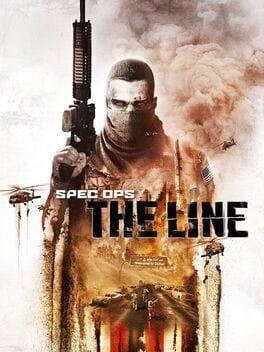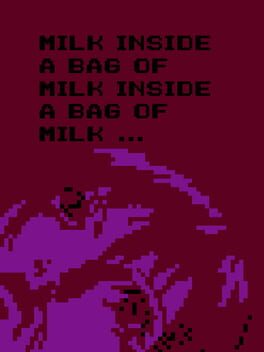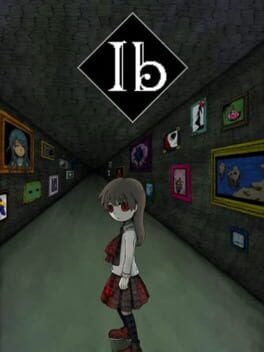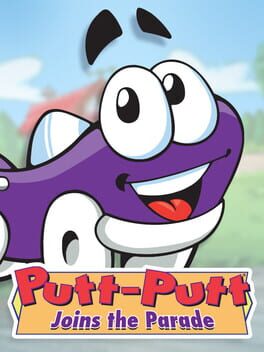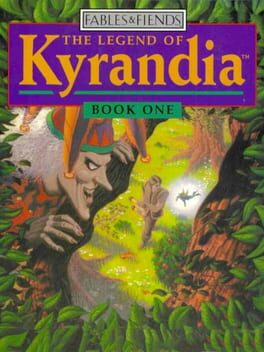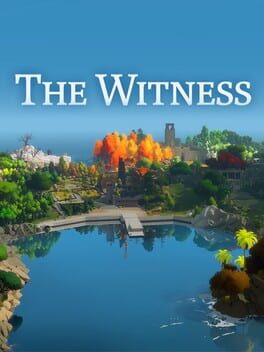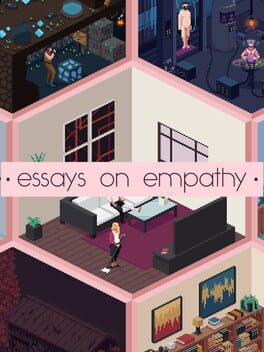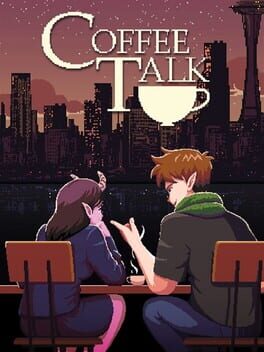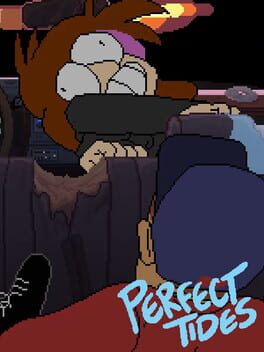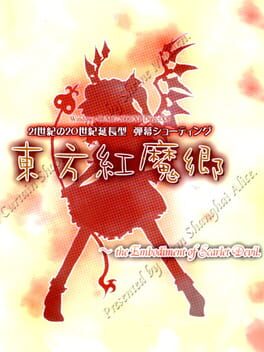dirigitive
9 reviews liked by dirigitive
Spec Ops: The Line
2012
This review contains spoilers
you know what? fuck it. spec ops: the line is worth five stars and then some. for a long time i sat on the fence about it, and had it collecting dust, uncommentated, at 4.5 stars - no more.
the fact this game was shuffled out-of-sight by 2k games, that an attempt is being made to erase its existence from the public under dubious pretenses at worst, or that it's been dropped in a double-whammy of corporate greed and convenient timing at best, shows us that this game is just as sorely needed now as it was 12 years ago.
many like to do a little joking about its "look what i made you do"-narrative, but those people are unaware that this precise portrayal of leadership at the hands of a vague authority is part of the point. this is taking down not merely the modern military shooter alone, but the entirety of the military industrial complex and its implications. the game design here is a direct analogue of the military chain of command, and the way it attempts to dissuade individuals and society as a whole from seeking blame in the hands of the actor.
on february 25th 2024, united states airforce member aaron bushnell self-immolated rather than continuing to maintain part in the u.s. military's support of yet another genocide - a genocide funded and fueled by this global force for despicable violence, a genocide committed, in part, with white phosphorous used against a civilian population.
the timing is just a bit TOO on-the-nose. we are supposed to forget that the same thing fuels this propaganda as fuels the systematic dehumanisation and killing of several peoples in asia and africa. spec ops, unlike every single other "modern military shooter", didnt flinch, and didnt lie. and for that, it had to disappear.
this is the only game that had the guts to give the player a gun, and let them shoot at a peaceful civilian population - then stand there with the implications of their actions. no fade-out. no game over. only you and the simulacrum of a dead body.
from the river to the sea, palestine will be free.
the fact this game was shuffled out-of-sight by 2k games, that an attempt is being made to erase its existence from the public under dubious pretenses at worst, or that it's been dropped in a double-whammy of corporate greed and convenient timing at best, shows us that this game is just as sorely needed now as it was 12 years ago.
many like to do a little joking about its "look what i made you do"-narrative, but those people are unaware that this precise portrayal of leadership at the hands of a vague authority is part of the point. this is taking down not merely the modern military shooter alone, but the entirety of the military industrial complex and its implications. the game design here is a direct analogue of the military chain of command, and the way it attempts to dissuade individuals and society as a whole from seeking blame in the hands of the actor.
on february 25th 2024, united states airforce member aaron bushnell self-immolated rather than continuing to maintain part in the u.s. military's support of yet another genocide - a genocide funded and fueled by this global force for despicable violence, a genocide committed, in part, with white phosphorous used against a civilian population.
the timing is just a bit TOO on-the-nose. we are supposed to forget that the same thing fuels this propaganda as fuels the systematic dehumanisation and killing of several peoples in asia and africa. spec ops, unlike every single other "modern military shooter", didnt flinch, and didnt lie. and for that, it had to disappear.
this is the only game that had the guts to give the player a gun, and let them shoot at a peaceful civilian population - then stand there with the implications of their actions. no fade-out. no game over. only you and the simulacrum of a dead body.
from the river to the sea, palestine will be free.
Ib
2022
Argh, this makes me pull air through my teeth... I hate that I like this remake less, because I can see they tried, and in a lot of ways, the improvements upon the original work very well!
But just. Not always.
In writing this all down, I'm bearing recency-bias in mind, and the inherent problems in comparing a remake to a game that, due to changing technology, I can't play as I used to again, and as such only exists in my head. (Nice to see "Carrie Careless and the Galette des Rois" actually working, gotta say.)
My nostalgia for Ib is a thick fog, and I have to admit: This game's puzzles are so painfully easy on a repeat playthrough that this may have lessened my opinion of the remake when, in reality, the original was exactly the same way.
I'll talk about the art real quick: It's a land of contrasts. I've made the blunder of becoming a professional pixel artist since I played the original, so strange mistakes like a persistent lack of proper contrast on character portrait colours, pixel art jaggies, and the (rare) untouched sprite from the original (at one point there's a woman and her daughter that are transparently a lot smaller than all the other sprites in the game including Ib, an elementary school child) stick out to me like a sore thumb. The original's color-reduced digital art was a lot nicer-looking to me than the new pixel art portraits - though of course, that art style isn't gone or anything - just, unfortunately, less commonplace.
Environments have strong texturing that I'm frankly jealous of, but lack detail in every other way. The UI feels... disjointed? Like different parts of it weren't just made by different artists, but in different types of digital media from artist to artist. Frankly, I don't care much for the new Rose health bar. :/
When the art wants to go hard though, it goes hard! I loved the extra detail on all the Guertena artworks! They're very lovingly rendered and definitely a stronger way to display a fictional artist's work than before. The full-screen title and such is also beautiful.
Music's largely an improvement! Once or twice I felt like a track was grating, but so did I with the original.
Despite everything, this is a good way to play this RPG Maker classic - maybe the only way to play it properly, actually, so. Y'know. Take my criticisms with a grain of salt.
But just. Not always.
In writing this all down, I'm bearing recency-bias in mind, and the inherent problems in comparing a remake to a game that, due to changing technology, I can't play as I used to again, and as such only exists in my head. (Nice to see "Carrie Careless and the Galette des Rois" actually working, gotta say.)
My nostalgia for Ib is a thick fog, and I have to admit: This game's puzzles are so painfully easy on a repeat playthrough that this may have lessened my opinion of the remake when, in reality, the original was exactly the same way.
I'll talk about the art real quick: It's a land of contrasts. I've made the blunder of becoming a professional pixel artist since I played the original, so strange mistakes like a persistent lack of proper contrast on character portrait colours, pixel art jaggies, and the (rare) untouched sprite from the original (at one point there's a woman and her daughter that are transparently a lot smaller than all the other sprites in the game including Ib, an elementary school child) stick out to me like a sore thumb. The original's color-reduced digital art was a lot nicer-looking to me than the new pixel art portraits - though of course, that art style isn't gone or anything - just, unfortunately, less commonplace.
Environments have strong texturing that I'm frankly jealous of, but lack detail in every other way. The UI feels... disjointed? Like different parts of it weren't just made by different artists, but in different types of digital media from artist to artist. Frankly, I don't care much for the new Rose health bar. :/
When the art wants to go hard though, it goes hard! I loved the extra detail on all the Guertena artworks! They're very lovingly rendered and definitely a stronger way to display a fictional artist's work than before. The full-screen title and such is also beautiful.
Music's largely an improvement! Once or twice I felt like a track was grating, but so did I with the original.
Despite everything, this is a good way to play this RPG Maker classic - maybe the only way to play it properly, actually, so. Y'know. Take my criticisms with a grain of salt.
Yume Nikki
2004
Yume Nikki and I have been passing acquaintances for more than a decade. Every so often, I'd fire the game up (undoubtedly an outdated build, now that I think about it) and explore a little; and, after an hour or two, put it down, bored.
However, if this and the general tone of other reviews here is any indication, Yume Nikki wasn't the kind of game I could easily put to the side and declare "not for me". Even as I searched Madotsuki's dream-wastes for gripping ephemera, and frequently came away empty-handed (and slightly disquieted), the game never lost its grip on me - since 2012, when I first downloaded it.
And- you know what, in retrospect, I realise was my grave mistake in those days?
I played Yume Nikki with a guide.
Trying to shortcut your stay in these dreams, treat your stay in Madotsuki's dreams like "tourism", get to the "interesting part" where something cool happens that makes the wandering "worth it"- well, that attitude diminishes the wandering! It robs the game of its ability to unfold its atmosphere to its fullest. Ahead of anything else, Yume Nikki, in your mind, must NEVER be a "problem to solve". "A game to complete." I get those that want to bypass the Hellmaze (it's the reason I took away a half-star from its score lol), but...
Yume Nikki needs you to remain, and to persist. Yume Nikki needs you to wander. Yume Nikki needs you to be subsumed, wants to be played in a dark room with no distractions and certainly no walkthroughs open on the side.
And when I finally did it like that, when I embraced the uncertainty and the depths of its exploration,
Yume Nikki rewarded me.
Earlier this year, on a single exploration through this dream, I saw both some of the most inspiring art I've seen in any video game, and played through the most heart-thumping stealth segment in any video game I've ever played: I went to space; I delved into sewers. I grew long hair. I extinguished fire by controlling rain. I tiptoed around bookshelves to evade a bloody ball of hair that, in the top-down perspective, was just as frequently obscured as myself, often needing me to make educated guesses of its whereabouts.
EDIT: A friend told me later that what I saw couldn't have hurt me - but it certainly didn't feel safe - which further solidifies my point.
After that play session, I was energised - and I finally really understood this game. All the years of trying had been worth it.
Yume Nikki, if you let it be itself undissected, is a game you come away from with stories to tell.
I genuinely feel like it's not a game that wants you to complete it - while I'm not spoiling the ending here, the game's conclusion certainly makes that interpretation sound.
It's also one of those true video game mysteries: For people who don't know Japanese especially, but I think for basically everyone who isn't Kikiyama, this game's internal workings in RPG Maker 2003 are so complex that I don't think we'll ever come to holistically understand it, and know every single thing it's capable of.
And that's more than okay. That's beautiful! Play Yume Nikki - and don't be afraid of wandering.
However, if this and the general tone of other reviews here is any indication, Yume Nikki wasn't the kind of game I could easily put to the side and declare "not for me". Even as I searched Madotsuki's dream-wastes for gripping ephemera, and frequently came away empty-handed (and slightly disquieted), the game never lost its grip on me - since 2012, when I first downloaded it.
And- you know what, in retrospect, I realise was my grave mistake in those days?
I played Yume Nikki with a guide.
Trying to shortcut your stay in these dreams, treat your stay in Madotsuki's dreams like "tourism", get to the "interesting part" where something cool happens that makes the wandering "worth it"- well, that attitude diminishes the wandering! It robs the game of its ability to unfold its atmosphere to its fullest. Ahead of anything else, Yume Nikki, in your mind, must NEVER be a "problem to solve". "A game to complete." I get those that want to bypass the Hellmaze (it's the reason I took away a half-star from its score lol), but...
Yume Nikki needs you to remain, and to persist. Yume Nikki needs you to wander. Yume Nikki needs you to be subsumed, wants to be played in a dark room with no distractions and certainly no walkthroughs open on the side.
And when I finally did it like that, when I embraced the uncertainty and the depths of its exploration,
Yume Nikki rewarded me.
Earlier this year, on a single exploration through this dream, I saw both some of the most inspiring art I've seen in any video game, and played through the most heart-thumping stealth segment in any video game I've ever played: I went to space; I delved into sewers. I grew long hair. I extinguished fire by controlling rain. I tiptoed around bookshelves to evade a bloody ball of hair that, in the top-down perspective, was just as frequently obscured as myself, often needing me to make educated guesses of its whereabouts.
EDIT: A friend told me later that what I saw couldn't have hurt me - but it certainly didn't feel safe - which further solidifies my point.
After that play session, I was energised - and I finally really understood this game. All the years of trying had been worth it.
Yume Nikki, if you let it be itself undissected, is a game you come away from with stories to tell.
I genuinely feel like it's not a game that wants you to complete it - while I'm not spoiling the ending here, the game's conclusion certainly makes that interpretation sound.
It's also one of those true video game mysteries: For people who don't know Japanese especially, but I think for basically everyone who isn't Kikiyama, this game's internal workings in RPG Maker 2003 are so complex that I don't think we'll ever come to holistically understand it, and know every single thing it's capable of.
And that's more than okay. That's beautiful! Play Yume Nikki - and don't be afraid of wandering.
Shelley Day, Ron Gilbert & co. making a cute 'lil kids adventure dominoes falling Humungous Entertainment co-founder convicted of defrauding bank to buy a dream home next door to Paul Allen
Oh, there's an actual game to talk about here, not just the sad irony of Humungous' downfall. It's just a rather simplistic experience aside from its then innovative take on the edutainment adventure. Most PC DOS & Mac software oriented towards this demographic at the time talked down to kids, rather than taking their wants and fears seriously. No more forced, obviously pedantic lessons you'd snooze through in the computer lab—Putt-Putt has an actual story to tell. And you're right in it with him, from proving your civic responsibility to homing a stray dog. It's a bit problematic in the sense that our purple funky four-wheeler mainly does this to, well, Join the Parade and all, but engaging and meaningful enough for almost any kindergartener. Just ignore how he could be saving lost puppies for its own sake. I got my start with Putt-Putt starting from the lunar sequel, but this felt oh so cozy and familiar in similar ways.
Gilbert's goals of empowering young players and avoiding condescension already show results here. The game opens with an effortless "tutorial" where Putt-Putt awakens at home and gets to toy around in the garage. It's here where you first encounter the studio's famous "click points", where seemingly mundane set dressing comes to life as you click around. Even the diegetic HUD, Putt-Putt's dashboard, has its own easter eggs, encouraging you to try interacting with anything on screen. From simple animations to complex multi-step interactions, these click points evolved from similar examples in earlier LucasArts and Cyan Worlds adventures, now used to intuitively advance the player's story by giving them a toybox of sorts.
That's really what saves this from a lower rating, as the plot is as basic and A-to-B as a Junior Adventure gets. Mowing lawns makes up the bulk of any challenge you'll find, and the puzzles couldn't be more elementary if they tried. Figuring out where to go and how to get the needed key items takes no time at all, for better or worse. This makes it a nice one-sitting game for its age group, no doubt. But the sequels add more interesting questing, click points, story sequences, etc. that Joins the Parade sorely lacks. It's the blueprint they'd all quickly surpass. I can't really poo-poo this adventure as such, nor can I rate it higher.
Can we at least talk about how uncanny Putt-Putt and his world looks in these first two MS-DOS entries? Pixel-era Humungous games had a lot of art jank, especially when characters look at the camera. Putt-Putt's proportions and facial expressions run the gamut from mildly off-model to humorously off-putting (pun intended). Some like to joke about him making a serial killer face here and in Goes to the Moon—I can totally see it. But that's also a charming reminder of the studio's beginnings, a bit before they moved to high-quality art and animation with Freddi Fish and their Windows 9x-era Junior Adventures.
What Myst did for the adult multimedia games market, Putt-Putt achieved for multimedia kids' games. This was an important step into the public eye for similar works like The Manhole, and a masterfully dialed-down, less lethal take on the point-and-click adventure during the genre's heyday. I just wish I could get more out of it nowadays, but that's what happens when you're used to the excellence of Pajama Sam or Spy Fox. Things only got more ambitious for the Junior Adventures in a short span of time, and it wasn't long before the parade left Putt-Putt's original story far behind.
Oh, there's an actual game to talk about here, not just the sad irony of Humungous' downfall. It's just a rather simplistic experience aside from its then innovative take on the edutainment adventure. Most PC DOS & Mac software oriented towards this demographic at the time talked down to kids, rather than taking their wants and fears seriously. No more forced, obviously pedantic lessons you'd snooze through in the computer lab—Putt-Putt has an actual story to tell. And you're right in it with him, from proving your civic responsibility to homing a stray dog. It's a bit problematic in the sense that our purple funky four-wheeler mainly does this to, well, Join the Parade and all, but engaging and meaningful enough for almost any kindergartener. Just ignore how he could be saving lost puppies for its own sake. I got my start with Putt-Putt starting from the lunar sequel, but this felt oh so cozy and familiar in similar ways.
Gilbert's goals of empowering young players and avoiding condescension already show results here. The game opens with an effortless "tutorial" where Putt-Putt awakens at home and gets to toy around in the garage. It's here where you first encounter the studio's famous "click points", where seemingly mundane set dressing comes to life as you click around. Even the diegetic HUD, Putt-Putt's dashboard, has its own easter eggs, encouraging you to try interacting with anything on screen. From simple animations to complex multi-step interactions, these click points evolved from similar examples in earlier LucasArts and Cyan Worlds adventures, now used to intuitively advance the player's story by giving them a toybox of sorts.
That's really what saves this from a lower rating, as the plot is as basic and A-to-B as a Junior Adventure gets. Mowing lawns makes up the bulk of any challenge you'll find, and the puzzles couldn't be more elementary if they tried. Figuring out where to go and how to get the needed key items takes no time at all, for better or worse. This makes it a nice one-sitting game for its age group, no doubt. But the sequels add more interesting questing, click points, story sequences, etc. that Joins the Parade sorely lacks. It's the blueprint they'd all quickly surpass. I can't really poo-poo this adventure as such, nor can I rate it higher.
Can we at least talk about how uncanny Putt-Putt and his world looks in these first two MS-DOS entries? Pixel-era Humungous games had a lot of art jank, especially when characters look at the camera. Putt-Putt's proportions and facial expressions run the gamut from mildly off-model to humorously off-putting (pun intended). Some like to joke about him making a serial killer face here and in Goes to the Moon—I can totally see it. But that's also a charming reminder of the studio's beginnings, a bit before they moved to high-quality art and animation with Freddi Fish and their Windows 9x-era Junior Adventures.
What Myst did for the adult multimedia games market, Putt-Putt achieved for multimedia kids' games. This was an important step into the public eye for similar works like The Manhole, and a masterfully dialed-down, less lethal take on the point-and-click adventure during the genre's heyday. I just wish I could get more out of it nowadays, but that's what happens when you're used to the excellence of Pajama Sam or Spy Fox. Things only got more ambitious for the Junior Adventures in a short span of time, and it wasn't long before the parade left Putt-Putt's original story far behind.
Dark Seed
1992
The Witness
2016
The Witness. Been sitting with this one for a while, trying to think about how best to tear it a new one. I think I'm finally ready to collect my thoughts in a review.
The Witness is aimless, purpose-devoid postmodernism. It takes the worst aspect of that era's fiction - its tendency to navel-gaze - to a new extreme.
If you have seen the ending (which I will not spoil, but will nonetheless warn you about), you know that this game holds no deeper meaning. The brunt of its intended message is: "Woah, isn't it weird how this video game absorbed you so much? WoaaaahhhH the way the human brain learns is SO COOL, line puzzles are everywhere now!" Except they aren't. Their importance starts and ends with the playtime of this game. It is not useful to you to learn how to navigate the complex rule set of these puzzles in your real life; learning them is a time bandit, nothing more.
The Witness is one thing: Line puzzles. Both gameplay-wise AND narratively, that is all it is. And that is the long and short of it.
The worst part, however, is that it tries - and succeeds! - in convincing you it is about more than just itself for the majority of its 20 to 40 hours. Quotation is abundant in The Witness: Audio diaries, movie and documentary clips; all of it feels like it's pointing to something deeper going on under the surface that is simply not there.
Lastly, I want to touch upon Johnathan Blownathon's blind spots in design that he fails to interrogate or amend: Accessibility design in The Witness is at an all-time fucking low. A lot of puzzles basically say "FUCK the hard-of-hearing LMAO", and basically all puzzles fail to account for colour blindness, or even offer an optional colour-blindness mode. Also, the FPS mechanics in this game make you motion sick incredibly quickly, which is an issue I really thought games at large had solved by this point in non-VR titles.
I 100%ed the Witness back in 2017, when I was at my most suicidally depressed. Its sound design, and environmental design are good; I have to give it that. It provided a steady and, at that point, needed dopamine drip-feed that kept me going for a while. I'm also grateful to it for introducing me to a myriad of more interesting media than itself, such as Andrey Tarkovsky's filmography and Italo Calvino's "The Invisible Cities". But that's where my praise wanes.
In the end, finishing The Witness is like eating handfuls upon handfuls of junk food with an intricately beautiful, "really-makes-you-think" art piece on the packaging. It's a binge-and-purge game that takes a lot of your time and leaves you with nothing.
3/10.
The Witness is aimless, purpose-devoid postmodernism. It takes the worst aspect of that era's fiction - its tendency to navel-gaze - to a new extreme.
If you have seen the ending (which I will not spoil, but will nonetheless warn you about), you know that this game holds no deeper meaning. The brunt of its intended message is: "Woah, isn't it weird how this video game absorbed you so much? WoaaaahhhH the way the human brain learns is SO COOL, line puzzles are everywhere now!" Except they aren't. Their importance starts and ends with the playtime of this game. It is not useful to you to learn how to navigate the complex rule set of these puzzles in your real life; learning them is a time bandit, nothing more.
The Witness is one thing: Line puzzles. Both gameplay-wise AND narratively, that is all it is. And that is the long and short of it.
The worst part, however, is that it tries - and succeeds! - in convincing you it is about more than just itself for the majority of its 20 to 40 hours. Quotation is abundant in The Witness: Audio diaries, movie and documentary clips; all of it feels like it's pointing to something deeper going on under the surface that is simply not there.
Lastly, I want to touch upon Johnathan Blownathon's blind spots in design that he fails to interrogate or amend: Accessibility design in The Witness is at an all-time fucking low. A lot of puzzles basically say "FUCK the hard-of-hearing LMAO", and basically all puzzles fail to account for colour blindness, or even offer an optional colour-blindness mode. Also, the FPS mechanics in this game make you motion sick incredibly quickly, which is an issue I really thought games at large had solved by this point in non-VR titles.
I 100%ed the Witness back in 2017, when I was at my most suicidally depressed. Its sound design, and environmental design are good; I have to give it that. It provided a steady and, at that point, needed dopamine drip-feed that kept me going for a while. I'm also grateful to it for introducing me to a myriad of more interesting media than itself, such as Andrey Tarkovsky's filmography and Italo Calvino's "The Invisible Cities". But that's where my praise wanes.
In the end, finishing The Witness is like eating handfuls upon handfuls of junk food with an intricately beautiful, "really-makes-you-think" art piece on the packaging. It's a binge-and-purge game that takes a lot of your time and leaves you with nothing.
3/10.
